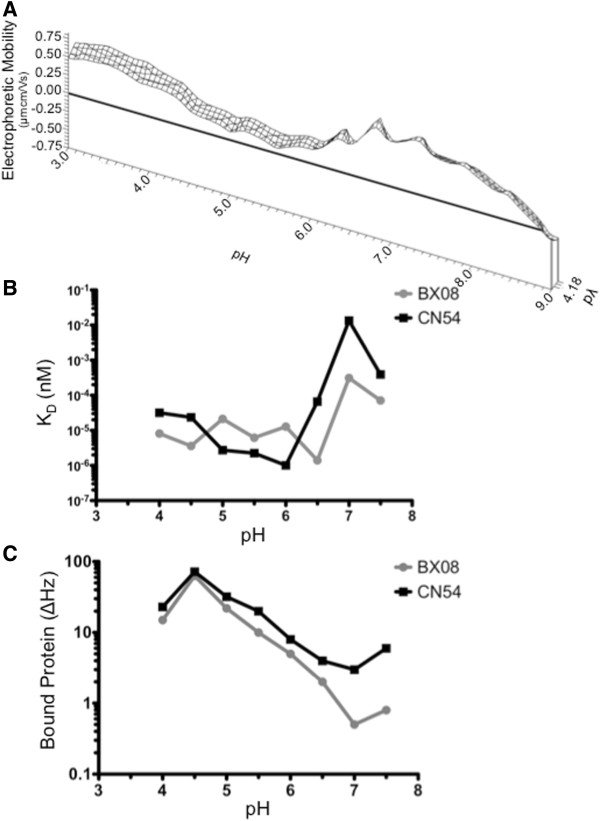Figure 9.
Electrophoretic mobility and affinity characterization of soluble CD4 (sCD4) across a range of pH. (A) Electrophoretic mobility was measured at 13 pH values ranging from 3.0 to 9.0 for sCD4 in 154 mM NaCl. Data was collected for three titrations, and three measurements were made and averaged at each titration point (n = 27 per titration point). Electrophoretic mobility is positive for all pH conditions examined except pH 9.0 where slightly negative values of −0.15 μmcm/Vs are observed. Surfaces were plotted using direct linear interpolation. (B, C) Soluble recombinant human CD4 (sCD4) binds to trimeric gp140 in a pH dependent manner. Using an Akubio RapID4 acoustic biosensor, sCD4 is immobilized covalently on a gold coated quartz sensor cassette and trimeric BX08 or CN54 gp140 at concentrations ranging from 1 to 8 μgml-1, in a two fold dilution series, are allowed to bind for 3 minutes followed by 5 minutes of dissociation. This binding process was performed across 8 pH values, from 4.0 to 7.5 in 0.5 pH increments. Surfaces were regenerated in between injections by washing with low pH glycine buffer with Tween-20. Affinity constants were calculated according to the Langmuir binding model. Protein bound was measured at the highest gp140 concentration as the change in vibration frequency of the sensor surface. Data shown are the mean of triplicate measurements.

